by Hank Brown
Categories Cars
Tires are essential to get your car running. Its primary role is to support the load of your car, transmit traction and braking forces to the road surface, absorb road shocks, and change and maintain direction.
So how long does it take to get new tires? The time required to change a tire varies depending on the situation and a professional will take anywhere from five to fifteen minutes to change new tires. If you opt for an auto care center to change your tires, it will take 45 minutes up to 5 hours but on the other hand, if you opt to change your tires with the help of roadside assistance, it will take less than an hour.
Since it is a vital part of your car, it also needs maintenance. Maintenance upkeep is a must for you to make sure your car is up and running in good condition. Its primary purpose is to guarantee your safety and dodge the excessive expenses of your car as well.
So, how long does it take to get new tires? Here are the facts and tips about maintaining your car wheels. So without much further ado, let us get started so keep reading.
Table of Contents
The time required to change a tire varies depending on the situation.
A professional will take anywhere from five to fifteen minutes to change new tires.
If you opt for an auto care center to change your tires, it will take 45 minutes up to 5 hours. On the other hand, if you opt to change your tires with the help of roadside assistance, it will take less than an hour.
Most tire manufacturers recommend having tires inspected every six years and, if necessary, replaced. They also recommend replacing them after ten years, no matter how much tread they have on them.
Each tire replacement will take about 10 to 15 minutes, but, on average, it will take about 2 hours for all four tires to be replaced.
If we do the math, replacing two tires may take 20 to 30 minutes.
Costco isn’t really a universal tire store and repair shop. They only install tires that have been purchased from them.
Generally, Costco tire installation takes about 45 minutes.
Similar to Costco, it will take only 45 minutes to change your tires at Walmart.
However, you might spend up to four hours in Walmart. It will depend on how many cars are waiting in front of you. So, patience is the key.
Whether your wheel needs a paint job, powder coating, or re-chroming, scrapes, gouges, and bends, Discount Tire can handle the job!
Discount Tire stores can repair or reinstall your wheels within a day or two.
On average, if you opt for Firestone to change your tires, it will take about two and a half hours to change your tires.
If you opt for Goodyear to change your tires, it will take 45 minutes to one hour.
BJs is so much alike with Costco. They will not install or replace tires that you bought somewhere else.
In summary, it takes 45 minutes to 5 hours, on average. But, of course, the time will always depend on your situation and what’s more convenient for you.
Regardless of whichever store mentioned above you opt to change your tires with, it is a must to replace your tires. Again, this is to ensure your safety while you drive.
Also, not having your car tires upkeep often might cost you more than what you have to pay for the maintenance. Therefore, it can help you to avoid unnecessary expenditures of your car in the future.
Related:
 Hot
HotImage credits – Canva
How long does it take to change a tire? It’s troublesome to have a flat tire. You face delays in your day’s plan in addition to the inconvenience of bringing out the tools to replace the tires. Taking your car in for a tire service might take a long time, adding to the annoyance and anxiety.
As a result, replacing tires is a necessary skill that all drivers should possess. Although you can contact and wait for roadside help if you have a flat tire, there’s always the possibility that the scenario will prevent you from doing so. It takes different amounts of time to change a tire.
Changing a tire can take anywhere from 15 minutes to 5 hours. It depends on how many tires you’re changing, who’s changing them, and where you’re changing them. A flat tire can take anywhere from 15 to 30 minutes to change on your own.
How long does it take to change a tire at Walmart? If you take your car to a store like Walmart, Costco, or Discount Tires, be prepared to wait longer because you may not be the only customer. We’ll look at how long it can take to change a tire.
You should inspect your tires on a regular basis for symptoms of damage that may require repair. This is something you can accomplish on your own at any moment. On weekends, most people will set aside an hour or so, and there are a variety of strategies for doing so.
The first and most straightforward step is to check the air pressure on your tires. For optimal effects, do this at least once a month. The penny test is a good way to examine your tire’s tread wear. Treadwear indicators or a tread depth gauge are other options.
Because all you need is a penny between your thumb and forefinger, the penny test is the simplest and most cheap way. Your tires are still acceptable if the tread covers the head portion of the coin. If not, it’s possible that you’re in need of a new set of tires.
If not, it’s possible that you’re in need of a new set of tires.
On average it should take about 20 minutes to replace your tires. However, this may or may not be the case, depending on the circumstances. The amount of time it takes a vehicle to change a tire varies depending on the situation.
The time it takes to mount a vehicle’s tire is determined by the following factors.
The time it takes to mount a vehicle’s tires varies based on the number of tires that need to be replaced. If one of your vehicle’s tires is punctured by a nail, pin, or other objects, it is critical to know how to mount a tire in such a case. You’ll either have to change the tire yourself or get someone to do it for you.
If you don’t know how to change a tire properly, you’ll need to get assistance from an auto repair shop. In such instances, mounting one tire of your vehicle and getting back on the road will take around twenty minutes.
When it comes to situations like replacing worn-out tires, you’ll need to replace all four tires at once. It takes a little longer to mount all of the tires in this condition than it does to put one tire. Just changing the two tires will take roughly thirty minutes.
Your location also determines the time to change your car’s tires. If you are unable to mount the tire on your own or do not have the necessary tools, you will have to wait for someone to bring them to you. Otherwise, you’ll have to wait for someone from an auto repair shop.
You will have to spend extra time on the road if you are far away from that location. Of course, if you know how to mount the tire and have all of the tools you’ll need, and you’re at home, it should only take you around fifteen minutes.
And, if you’re on the road, changing the tire and moving on could take twenty to twenty-five minutes.
The time it takes to change a flat tire is determined by the vehicle you drive.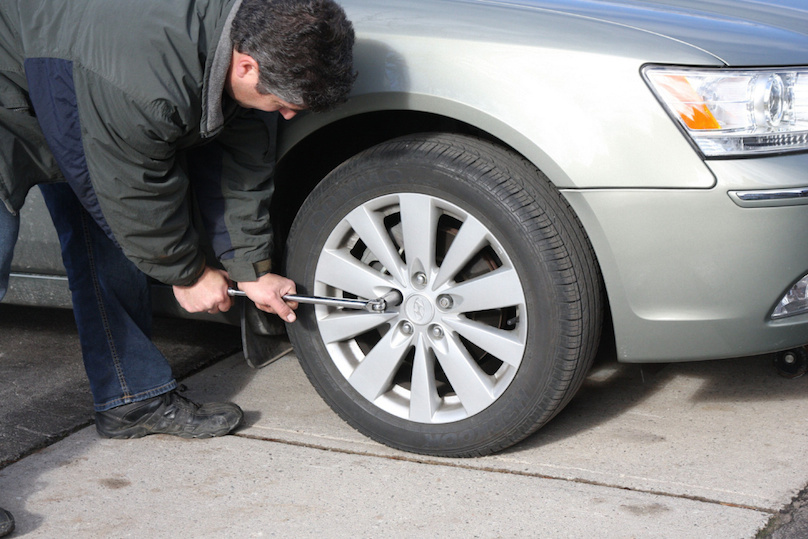 It also fluctuates based on where you’re attempting to adjust it and environmental factors such as weather. On the other hand, changing a tire is a reasonably simple procedure.
It also fluctuates based on where you’re attempting to adjust it and environmental factors such as weather. On the other hand, changing a tire is a reasonably simple procedure.
You’ll be able to perform the task on your own if you’re handy and know how to handle the most common car repair instruments. It shouldn’t take more than 15 to 30 minutes to complete. However, if you require new tires, you may be required to replace all four, which would take longer.
How long does it take to change a tire by a professional? The type of vehicle you drive impacts how long it takes a professional mechanic or tire facility to replace your tire. Their method affects the time it takes, but the busyness of the service center has a bigger impact.
While a professional mechanic may undoubtedly change your tire faster than you can, they are constrained by the number of other automobiles they are servicing. As a result, the amount of time it takes a professional to change a flat tire varies substantially.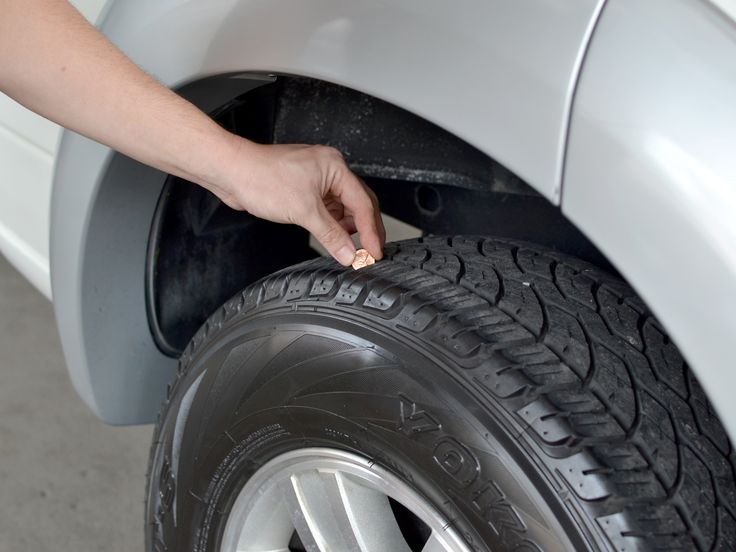
When you change a flat tire yourself, you save money that you would have spent at a repair center or technician. It also means you may do it on your own schedule, saving the time it would take to drive and wait for the service to be performed.
However, if you’re a novice, having your tire changed by a professional may be faster.
A professional also better understands your vehicle’s mechanics and can inspect anything from air pressure and rotation to tread wear and pinholes. It is impossible to overestimate the significance of tire safety.
Aside from the damage that driving on a flat tire can cause, over 700 motor vehicle deaths were caused by tire failure in 2016.
There are various measures to follow before you begin the process of replacing a flat tire with a spare tire. To begin, make sure you gently steer the vehicle off the road and into a secure parking spot.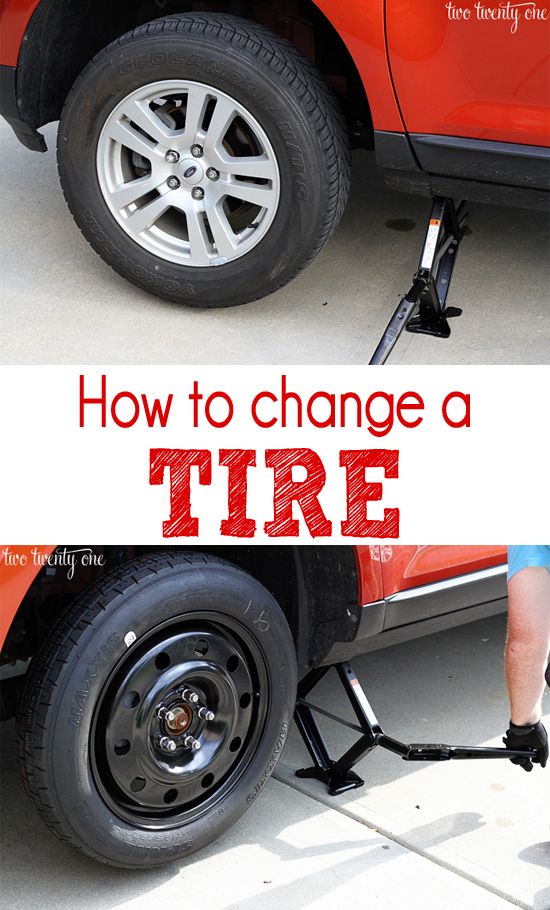 This space must be large enough for you to move around the car without putting yourself in danger of being hit by other motorists.
This space must be large enough for you to move around the car without putting yourself in danger of being hit by other motorists.
As you repair your flat tire, make sure your emergency flashers are activated so that other cars are aware of your presence. If you have a reflective warning sign, park it several feet behind your vehicle for further protection.
Although changing a flat tire necessitates some simple procedures, it is an essential skill that every driver should master.
You’ll need the following tools to change a tire:
Apart from them, it’s a good idea to keep a torch, gloves, and a raincoat in the trunk so you can replace tires even if it’s dark or rainy.
The first step in changing a tire is locating a safe area to do it. When you know your tire is flat, avoid making any sudden turns or stops. Instead, gradually slow down and look for a level spot with adequate room to change a tire.
When you know your tire is flat, avoid making any sudden turns or stops. Instead, gradually slow down and look for a level spot with adequate room to change a tire.
While it depends on your location, it’s best to pull over to an empty parking lot or a straight roadside to avoid rolling your car down. To be safe, use the parking brake.
When you turn on your hazard lights or flashers, it signals to other drivers that you’ve come to a complete stop due to an emergency.
To keep the automobile from rolling during the change, wheel wedges are placed against the tires. When changing a rear tire, place the wedges in front of the front tires, and when changing a front tire, place the wedges behind the rear tires.
If you don’t have any wheel wedges, huge stones or bricks will suffice.
It’s now time to concentrate on the flat tire. Using a lug wrench, turn the nuts counterclockwise. This may require considerable strength, so don’t be scared to use it. When they’re loose, don’t remove them just yet; wait till the tire is removed.
Using a lug wrench, turn the nuts counterclockwise. This may require considerable strength, so don’t be scared to use it. When they’re loose, don’t remove them just yet; wait till the tire is removed.
Hubcaps cover the lug nuts on some tires. If this is the case, you must first remove these. Check your manual to determine if additional tools are required or if a lug wrench will suffice.
Place the jack under the vehicle with care. Again, read the manual’s directions because the jack may need to be placed in a certain area in the car frame. Place the piece of wood beneath the jack before raising the automobile once you’ve discovered the right position. Raise the vehicle until the flat tire is about six inches above the ground once the jack is appropriately positioned. After that, thoroughly detach the lug nuts.
Grab the wheel by the treads and pull it off. Remove it and begin installing the spare tire on the lug bolts. Replace the nuts and tighten them once the bolts are visible through the rims.
Replace the nuts and tighten them once the bolts are visible through the rims.
Gently lower the vehicle to the ground using the jack. Make sure the lug nuts are tightened all the way.
How long does it take to change 4 tires? Changing all four tires on your own might be exhausting because it takes longer. This is why the majority of automobile owners choose to have their vehicle serviced by a tire shop mechanic.
When new tires are installed, they will almost always need to be balanced. Tires that are balanced are more resistant to wear and tear. A set of balanced tires will last considerably longer.
The time it takes to mount and balance four tires varies depending on the tire center. However, it takes an average of 1 to 2 hours to finish this procedure. As you can see, having your tire professionally mounted and balanced takes very little time.
However, it takes an average of 1 to 2 hours to finish this procedure. As you can see, having your tire professionally mounted and balanced takes very little time.
With an average of 240 million weekly customer visits, Walmart is one of the most prominent tire retailers. Yes, you read that correctly. Walmart estimated that 240 million service visits were made in 2021. That’s a colossal figure.
Due to its popularity, getting a car repair service at Walmart will take some time. According to online sources, replacing your tires at Walmart could take up to 5 hours. As a result, if you have a tight schedule and don’t have a backup vehicle, you should carefully assess Walmart’s service hours.
If you have another vehicle, you might want to consider Walmart. A large number of client visits, in my opinion, indicates that the service is of high quality and dependable.
It could take 3 to 4 hours to replace all four tires at Costco. Because Costco does not have as many customers as Walmart, it takes a little less time. One likely explanation is that Costco charges a greater service fee than Walmart.
Because Costco does not have as many customers as Walmart, it takes a little less time. One likely explanation is that Costco charges a greater service fee than Walmart.
This price and comparison of tire center services may provide you with additional information.
Costco’s services have some limitations as well. If you don’t buy your tires from Costco, for instance, they may refuse to install them. This tire center may be an alternative if you have not yet ordered tires.
According to some car owners, replacing four tires at Costco can take up to 45 minutes. If you’ve scheduled an appointment ahead of time, this is most likely the case. If you walk in, you’ll probably have to do so on a Saturday and expect to stay there for 3 to 4 hours.
Again, it is dependent on how busy the shop is at the time you visit.
Discount Tire attempts to perform the tire replacement service in 45 minutes, according to the information I’ve obtained. It’s worth noting that this applies to all four tires. If the tire center fulfills its promise, that is a very quick service.
It’s worth noting that this applies to all four tires. If the tire center fulfills its promise, that is a very quick service.
Another benefit of visiting Discount Tire is that you can visit them at any time. You can walk in at any time and be advised to wait an hour, or you can opt to be notified via SMS or email when your car is prepared.
Many consumers are satisfied with the services provided by this company because the staff is courteous and efficient.
The majority of customers want to know not only how long it takes for a tire change, but also when it should be done. There is no one-size-fits-all answer to this question. To summarize, an estimate can be made based on a number of factors.
For example, it will depend on your driving style, the state of the road, the weather, the tires’ design, and how they behave. The lifespan of your car’s tires is determined by all of these factors.
You must also examine the impact, expected tread life, and your driving style, in addition to your car model and the type of tires it employs.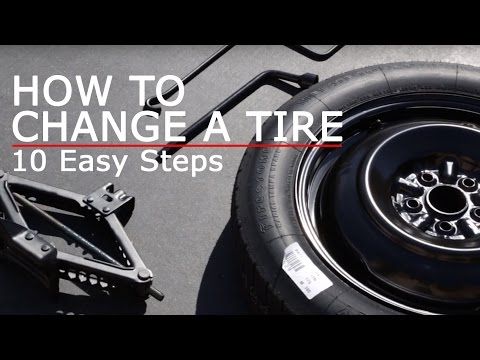 The rubber compound in your tires wears down faster when you drive on pavements. If you drive rapidly, your tires will likewise wear out faster.
The rubber compound in your tires wears down faster when you drive on pavements. If you drive rapidly, your tires will likewise wear out faster.
Other variables that can shorten your tire’s lifespan are driving below prescribed pressure levels or driving with wheels that are out of alignment. You’ll pay more in the long run to fix these problems, and you’ll notice that your car runs out of gas sooner than usual.
Tire rotation is important because if you don’t rotate your tires on a regular basis, they will be more prone to wear and tear, especially the front tires. The front tires wear out more quickly because they bear the majority of your vehicle’s weight.
There’s no way of knowing how long your car’s tires will last, but there are signals that they should be replaced. It’s also helpful to know what factors influence tire performance and longevity so you can take better care of your vehicle.
Experts recommend that you inspect your tires at least once a year for the first five years of car ownership for the greatest results. As part of your car’s annual check-up, this should be done by professionals. This is because experts will use the proper instruments to do the task effectively and avoid further tire damage.
As part of your car’s annual check-up, this should be done by professionals. This is because experts will use the proper instruments to do the task effectively and avoid further tire damage.
Even if you haven’t had an accident in ten years, you should always inspect your tires for natural wear and tear that occurs with continuous use. To be on the safe side, most experts recommend replacing your tires every ten years.
To avoid costly difficulties down the road, you should change your tires when the time comes, even if they appear to be in fine shape. Remember that the performance of your car is determined by its tires.
As a result, safe handling must be emphasized, and they must be examined on a regular basis to ensure proper maintenance and help them survive longer.
Several factors influence the amount of time it takes to change an automobile tire. The type and size of the tire that has to be replaced is the most common. When removing tires from an automobile, some require extra care, such as removing the hubcap and wheel cover before reinstalling them.
When removing tires from an automobile, some require extra care, such as removing the hubcap and wheel cover before reinstalling them.
Big tires, on the other hand, usually contain a lot of lug nuts, which take a minute longer to loosen and tighten than small tires. Another reason why changing a tire may take longer is the vehicle’s location. Changing a tire on a car parked at home takes less time than changing a tire on the side of the road.
This is owing to the fact that changing a tire at home has few interruptions or diversions. There will be many distractions from other road users when changing a tire on the side of the road or in town, making the operation take longer.
It is crucial for car owners to understand how to change car tires, but it is much more important to maintain the tires regularly.
Due to rust or dirt, the rims are frequently jammed solid. If this is the case, removing the wheel and replacing the tire will be difficult. They may use a rust remover or lubricant to loosen up the lug nuts first if they are too stiff. You’ll have to wait till it does the work in this scenario.
They may use a rust remover or lubricant to loosen up the lug nuts first if they are too stiff. You’ll have to wait till it does the work in this scenario.
Even the greatest ratchets occasionally fail, and the screw must be physically removed and replaced with a new one. It may take a long time to repair your tires if this occurs. Your rims may have been damaged if you drove your car on flat or very low-pressure tires.
The afflicted rims will need to be repaired and greased to avoid air leaks. If the rims have become excessively unclean, they should be maintained as well. Air will escape from the place where the rim meets the tire if this is not done.
If it’s a well-known workshop, there’s a good chance it’ll be packed. In this situation, all you have to do is wait for their lifts and working employees to become available so that they can begin working on your vehicle. Once they begin working, they will ensure that the project is completed as quickly as possible.
It’s tempting to save a few bucks by having a friend or family member change your tires. While this may save you money in the short term, it may wind up costing you in the long run.
The majority of people lack the necessary equipment to mount and balance tires. Attempting to complete the task without the proper tools may result in damage to your rims.
Even replacing just one rim might cost you hundreds of dollars. Why not preserve your investment by taking your automobile to a tire servicing shop rather than risking it on a non-professional? You’ll be pleased you did it.
How long does it take for tires to be changed? Tire replacement can take anywhere from 15 minutes to 5 hours. The range is large due to a number of variables that will influence the actual service time.
These considerations include the number of tires to be replaced, the person who will perform the work, and the location. One of the finest solutions for saving time and money is to do it yourself.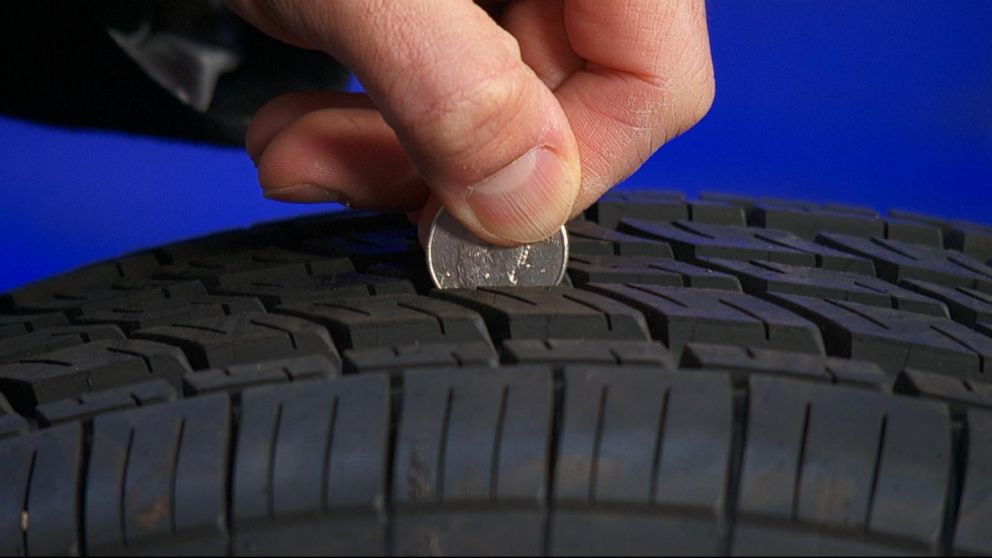
If you don’t have the courage to do it yourself, I recommend finding a suitable tire center to do it for you. When having a professional or a tire center replace your tires, you should evaluate the cost of the tire itself, the service fee or labor cost, the tire disposal cost, and, most significantly, the service time.
Check out these posts for more insights:
Tire Won’t Come Off: Here’s What To Do
How Long Does Fix-a-Flat Last?
Can You Patch or Plug A Motorcycle Tire?
The procedure for servicing cars at tire change stations can take a different amount of time. The exact figure depends on the equipment present and the professionalism of the master. On average, changing the wheels of a car at a tire fitting stretches for 20-30 minutes, in the absence of a serious workload of personnel.
Contents
In some cases, the installation procedure can take an hour or more. The exact figure will depend on the type of work performed.
The exact figure will depend on the type of work performed.
If you put new skates on the wheels, you need to count on at least an hour. The usual replacement of finished wheels is faster. A savvy master can change all discs in a few minutes.
The need for repairs also affects the efficiency of work. In some situations (vulcanization is required), the procedure may take a day.
Service stations and tire shops in Russia always try to work as quickly as possible. The salary of the master directly depends on the number of clients.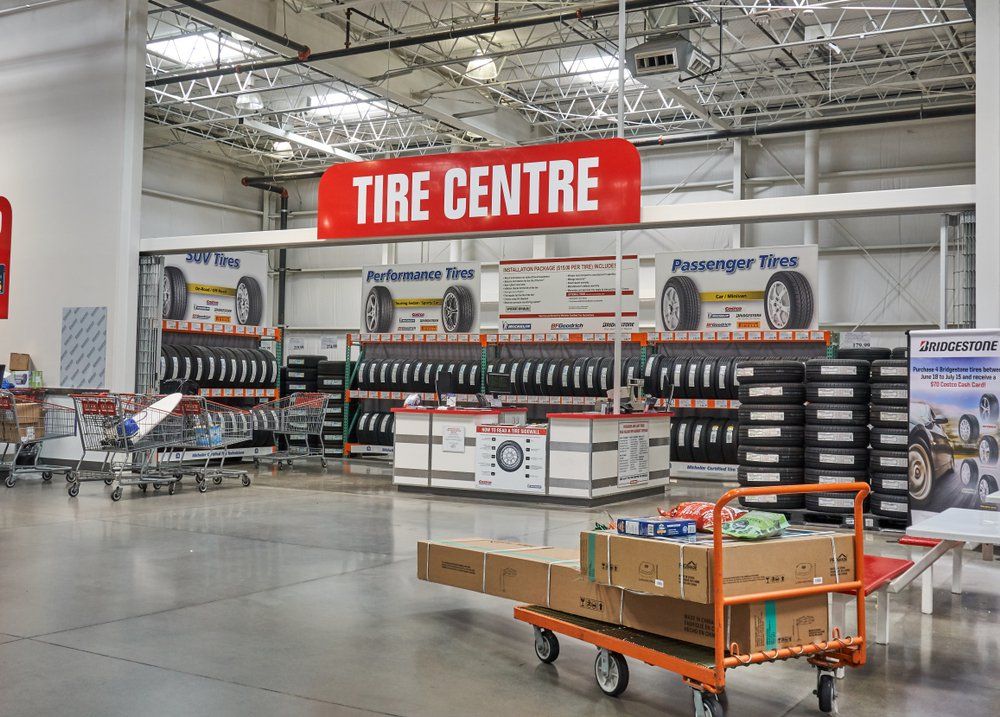 Usually the procedure for changing a set of tires from summer to winter does not take more than one hour.
Usually the procedure for changing a set of tires from summer to winter does not take more than one hour.
Waiting time can be increased by factors that do not affect the immediate speed of the specialist's work - this is the queue and customer requirements.
Installation of summer tires is more difficult for the master than winter tires. This is argued by the increased rigidity of the rubber. Dense sidewalls are difficult to put on discs, which requires great physical effort.
This difference will not be noticeable to the user. Experienced technicians know how to properly place a product on the machine for fast assembly.
To facilitate the process of changing tires and speed up service, you can foresee a few points in advance and not wait in a huge queue.
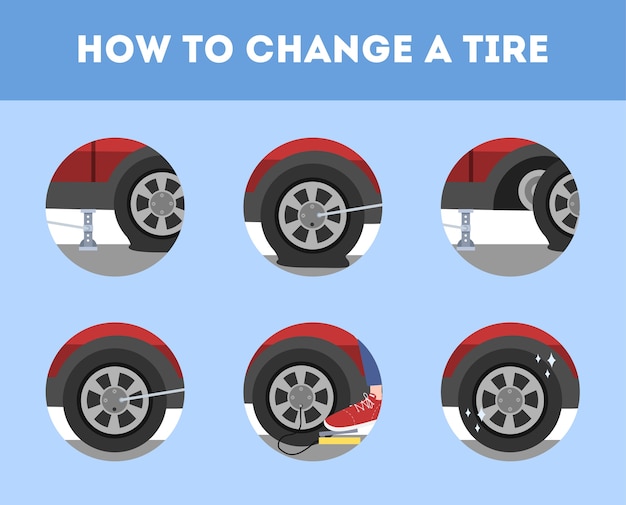 If the mechanic is warned about the visit, a window prepared for a specific car is formed at the service station. For complete confidence, you can give the mechanics an advance payment of 30-50% of the total cost of service.
If the mechanic is warned about the visit, a window prepared for a specific car is formed at the service station. For complete confidence, you can give the mechanics an advance payment of 30-50% of the total cost of service. Leave a review
 At what temperature should tires be changed? After all, tires affect not only road grip, but also comfort, handling and even driving style, shaping the summer and winter driving style. Let's figure out when you need to change tires, and how to do it right.
At what temperature should tires be changed? After all, tires affect not only road grip, but also comfort, handling and even driving style, shaping the summer and winter driving style. Let's figure out when you need to change tires, and how to do it right. The optimal time for a seasonal tire change differs from year to year due to weather quirks. And this is normal even for one city - what can we say about different regions, where ideas about winter and summer can differ significantly. Therefore, legislative initiatives on forced seasonal “changing of shoes” of cars in strictly defined months look rather strange: nature will still make adjustments.
Here, an analogy with public utilities is appropriate, who start and end the heating season not according to the calendar, but when a certain average daily air temperature is reached - that is, based on the objective readings of the thermometer. The same approach should be followed by motorists when choosing the time to change tires.
At what temperature should tires be changed? Manufacturers believe that +7 degrees Celsius is the optimal moment for seasonal “changing shoes”. At this point, the graphs of grip levels for winter and summer tires converge: at temperatures above +7°C, winter tires work inefficiently and wear out quickly. And at lower temperatures, the performance of already summer tires drops.
But this graph reflects the properties of some average tires. In reality, the composition of the rubber compound for different tires is significantly different. The same winter tires can be both soft "Scandinavian" (hardness 50-55 Shore units), and "Central European", with a hardness of 60-65 units. Obviously, their indicators are very different: the first ones will “float” even with a small plus, the second ones will work tolerably even at +10°C.
Read more: Which tires are best? Scandinavian, European, studded
The choice of temperature is also somewhat arbitrary. In a sharply continental climate, it can be +7 during the day, and -3 at night, and in the morning you will be met by a dangerous ice film on the road. Therefore, it is better to be guided by logic: switch to summer tires when there is no chance of encountering ice on the road. That is, if during the day the thermometer does not go into minus, and the long-term weather forecast does not promise a cold snap. And vice versa, put winter tires before the onset of "near zero" temperatures and the first frosts that threaten to turn puddles into ice.
In a sharply continental climate, it can be +7 during the day, and -3 at night, and in the morning you will be met by a dangerous ice film on the road. Therefore, it is better to be guided by logic: switch to summer tires when there is no chance of encountering ice on the road. That is, if during the day the thermometer does not go into minus, and the long-term weather forecast does not promise a cold snap. And vice versa, put winter tires before the onset of "near zero" temperatures and the first frosts that threaten to turn puddles into ice.
But still, it is the temperature, and not the presence of precipitation, that is the key signal to change tires. For example, at -5°C, summer tires are ineffective even on absolutely dry pavement. And when the temperature rises from +4 to +11°C (just in the region of "transitional" +7°C), the braking distance on winter tires increases by half a meter at once. With a further increase in temperature, winter tires are losing on braking to summer tires for several car bodies. Therefore, driving on winter tires in summer is very fraught.
Therefore, driving on winter tires in summer is very fraught.
Read more: To inform or change shoes? Do I need to change winter tires for summer ones in summer
If you have bought a new set of tires, you can immediately start installing it. But old tires that have been waiting in the wings for six months require certain checks.
First of all, make sure the tires are still serviceable. According to the Rules of the Road, the minimum allowable tread depth for passenger car tires is 1.6 mm (summer tires) and 4 mm (winter tires). With a smaller balance, you can no longer ride on tires.
You can measure the remaining tread with a special tool - a caliper. There are also special wheel tread depth gauges, including digital ones.
Another important traffic law requirement for tires: they must be the same (at least on each of the axles). Modern cars equipped with a lot of smart electronics - ABS, directional stability and braking force increase systems - are even sensitive to uneven tire wear, not to mention different sizes or tread patterns.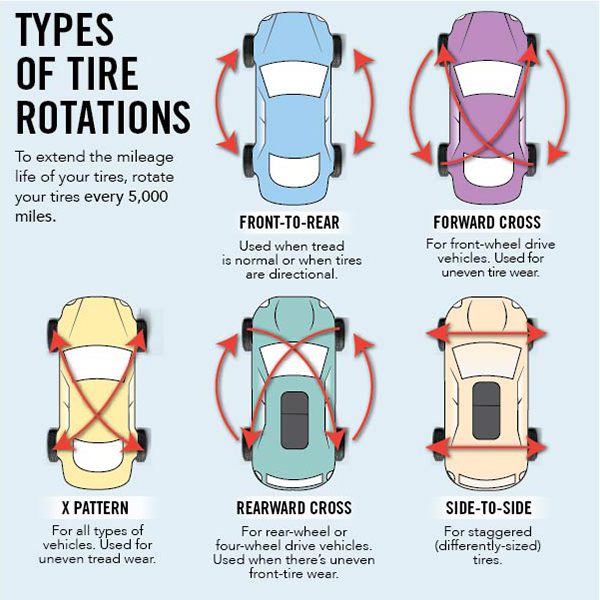 But the dangerous experiments of drivers with the so-called mixed fleet (sets assembled from different tire models) are already a thing of the past.
But the dangerous experiments of drivers with the so-called mixed fleet (sets assembled from different tire models) are already a thing of the past.
Also, before installation, you need to visually assess the condition of the tires. When stored for a long time, especially in unsuitable conditions (for example, at high humidity, which is not uncommon in private garages), the rubber may deform, crack or dry out. It is impossible to install tires with such defects: at high speed, any crack in the rubber becomes extremely dangerous and threatens to explode the tire.
By the way, for seasonal tire storage, you can use the “tire hotel Hyperauto”, where the correct temperature and humidity are constantly maintained. Hyperauto specialists bear full financial responsibility for the tires, and on the day you have appointed, they themselves bring the wheels for tire fitting, which is very convenient.
In addition to the tread depth and the absence of external defects, before installing the tires, you need to check their uniform wear (the tire should not be “eaten” from one side), as well as age. Natural rubber, from which rubber is made, retains its properties for 5 years from the date of manufacture of the tire. The aging of rubber greatly affects the effectiveness of traction, so it’s not worth driving on old, even if not worn, tires.
Natural rubber, from which rubber is made, retains its properties for 5 years from the date of manufacture of the tire. The aging of rubber greatly affects the effectiveness of traction, so it’s not worth driving on old, even if not worn, tires.
When changing tires, do not forget about their periodic rotation - rearrangement, the diagram of which can be found in the instructions for the car. Rearranging the wheels ensures uniform wear, which prolongs the life of the entire set. Standard tire rotation schemes are presented below, but it is better to check the instructions for your particular machine. It is recommended to change tires every 10,000 km.
On rear- and all-wheel drive vehicles, the front tires are moved to the rear axle diagonally (diagram A), or they are changed in a cross pattern (B). On machines with front-wheel drive, the situation is reversed: the rear tires are moved diagonally forward (Diagram C).
Tires with a directional tread pattern cannot be turned without overbeading. To rotate them without removing them from the disks, the front wheels are simply swapped with the rear wheels on each side of the car (Diagram D).
To rotate them without removing them from the disks, the front wheels are simply swapped with the rear wheels on each side of the car (Diagram D).
If the car is equipped with a full-size spare tire, not a spare tire, and you bought a set of five new tires, be sure to include the "spare" in the rotation (diagrams E and F), changing the wheels every 10,000 km. This will allow you to use the kit longer and easily replace any of the main ones with a spare wheel in case of damage - their wear will be the same. Thanks to this scheme, buying five tires in the end turns out to be more profitable than four, due to longer operation.
To maintain rotation, mark old tires with a colored marker before they are removed from the machine; if you forget about it, then it will be difficult to figure out where which tire was.
In the event that a replacement set of wheels is put on individual rims, check the pressure in them before installing them on the machine. If the tire deflated during storage, look for the reason - the air does not just leave. Under the weight of the car, the air leakage will only intensify, and the next morning after "changing shoes" you will have a flat tire waiting for you if you do not fix it in advance.
If the tire deflated during storage, look for the reason - the air does not just leave. Under the weight of the car, the air leakage will only intensify, and the next morning after "changing shoes" you will have a flat tire waiting for you if you do not fix it in advance.
Do not forget that the pressure in tires of different sizes may differ - do not inflate the old one, getting used to it in six months. Look for recommended pressures for different tire sizes on a sticker in the doorway.
Read more: Tire pressure. How and why to measure it
Do not forget about the importance of wheel balancing: it ensures uniform rotation, the absence of vibrations on the steering wheel and body, and also saves the life of wheel bearings. Balancing is needed for each wheel of the car, including the spare one, in case of emergency installation on the road, as well as for planned tire rotation.
Even if you use two sets of wheels on different rims, check the balance of each before installing.